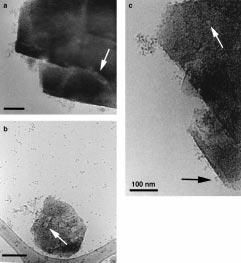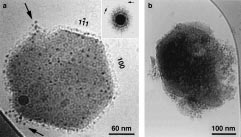Microsoft word - anaesthetic inguinal hernia pre-op info sheet1.doc
Anaesthetic Information Sheet for Hernia Surgery Overall philosophy: We aim to provide you with the best and safest anaesthetic care available anywhere. We aim to achieve the best possible pain relief. We aim to do what we can to make your stay in hospital as pleasant as possible. We aim to treat you the way you want to be treated: We do not “do” mediocre. This sheet lists what we do for the
 of solutions containing proteins interacting with zeolite Y
crystals. Pronounced adsorption of ferritin on ultrastable
zeolite Y crystals is shown to be correlated to protein
aggregation. Adsorption of ferritin molecules on low- and
high-silica zeolite Y crystals results in different arrangements
of the protein molecules. It is also shown that structural
information, like unit cell parameters, can be obtained from
inorganic materials present in vitrified solutions.
of solutions containing proteins interacting with zeolite Y
crystals. Pronounced adsorption of ferritin on ultrastable
zeolite Y crystals is shown to be correlated to protein
aggregation. Adsorption of ferritin molecules on low- and
high-silica zeolite Y crystals results in different arrangements
of the protein molecules. It is also shown that structural
information, like unit cell parameters, can be obtained from
inorganic materials present in vitrified solutions. large protein aggregates, some containing 50 ± 100 molecules.
large protein aggregates, some containing 50 ± 100 molecules.